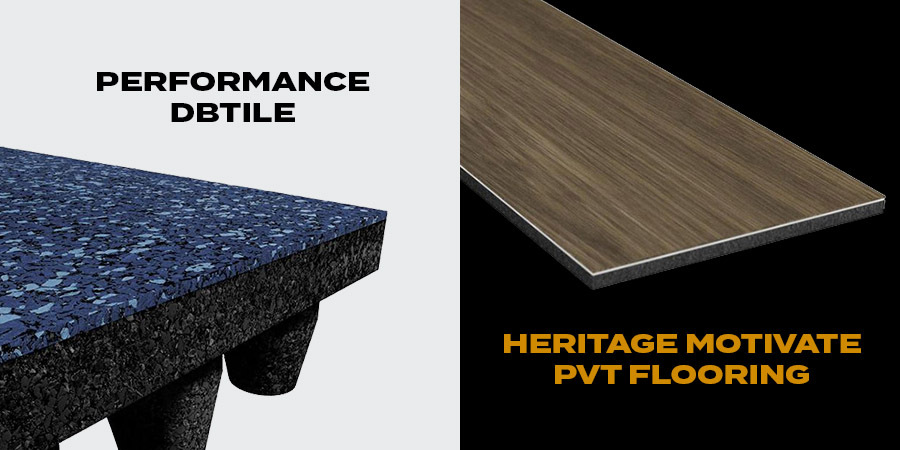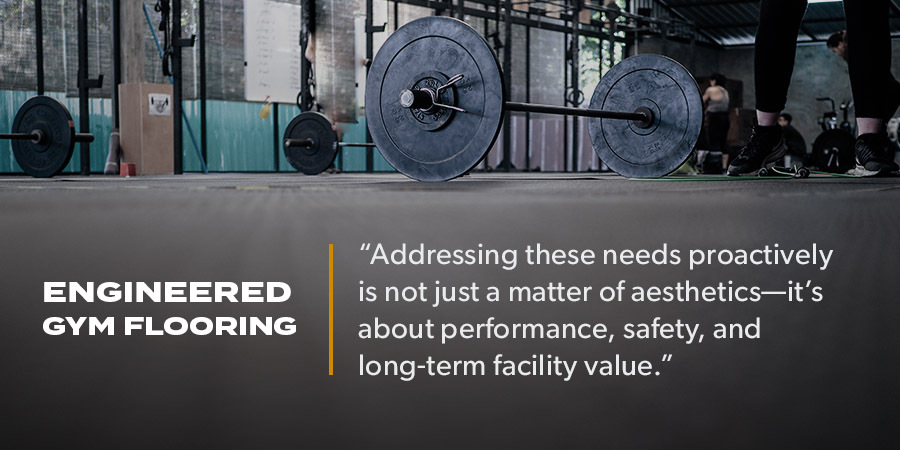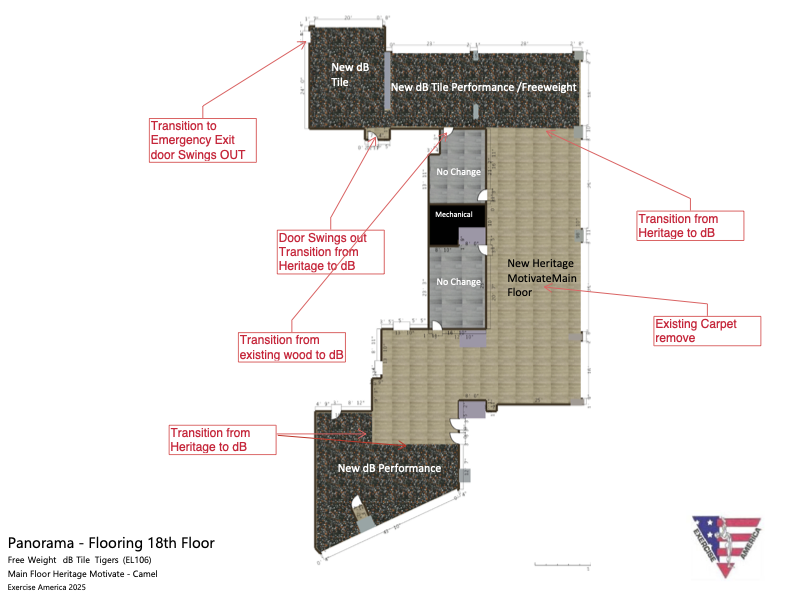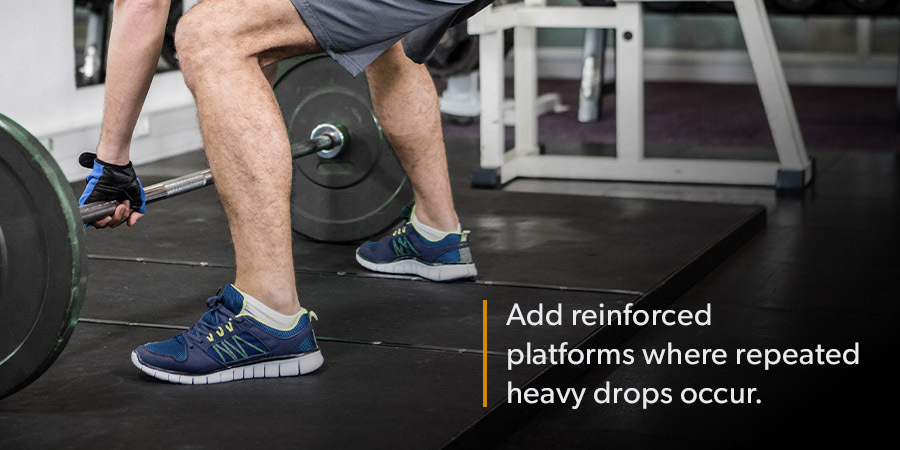Gym Noise Control 2025: What Owners Need to Know
Posted by Ardent Fitness on Oct 29th 2025
We engineer fitness spaces that perform as well as they look. In 2025, one topic keeps appearing across hotels, multifamily buildings, boutiques, and homes: noise and vibration. This guide distills the questions we hear, the issues we diagnose most often, and the flooring strategies that work—so you can plan confidently and avoid costly complaints.
Will my gym get in trouble if it’s noisy?
Yes. In mixed-use or hospitality buildings, persistent noise can trigger warnings, fines, restricted hours, or shutdowns. Cities enforce noise codes, neighbors log weight-drop thuds and bass-heavy classes, and early-morning sessions draw scrutiny. Build in noise control up front—proactive design costs less than enforcement, refunds, or relocation.

Is rubber flooring enough?
For heavy lifting, no. Standard rubber rarely stops structure-borne vibration. The fix is to decouple impacts from the building and use smart zoning with the right surfaces.
Smart zoning with Performance dBTile + Ecore Heritage Motivate PVT
- Create a heavy-lift island: Put racks/platforms on Performance dBTile. This is your designated drop zone.
- Run Heritage Motivate PVT everywhere else: Use it for cardio, circuits, coaching, and walkways for a quiet, wood-look finish.
- Keep the lift island in the middle: Don’t push heavy lifts against shared walls; leave a 3–5 ft buffer.
- Use clean transitions: Add reducers where dBTile meets Heritage so users know where lifting vs. general training happens.
- Place cardio away from shared walls: Mount treadmills/rowers/bikes on isolation pads; stagger machines so impacts don’t line up.

Simple room treatments that help
- Ceiling panels/baffles to cut echo and overall noise.
- Durable wall panels behind racks and along long, hard walls.
- Sound-smart music setup: More speakers at lower volume; isolate subs/amps; roll off some deep bass.
- Tight doors and gaps: Solid-core doors with seals/sweeps; close up obvious gaps around ducts and cabling.
Bottom line: Performance dBTile in the lift island + Heritage Motivate PVT across the floor, plus a few straightforward room tweaks, keeps impact energy out of the structure and reduces complaints—far better than rubber alone.
Are upstairs or mass-timber gyms higher risk?
Yes. Lightweight/flexible floor systems transmit low-frequency energy more readily. Plan for thicker, better-isolated assemblies and reinforced heavy-lift zones from day one.
Common noise & vibration issues (and why they happen)
- Heavy lifts & weight drops: Short, high-energy impulses excite low-frequency modes; simple dBA readings miss the “thud” that travels through slabs/columns.
- Treadmills, rowers, plyo: Repetitive impacts create structure-borne vibration felt rooms away.
- Group training music & mic’d instruction: Bass couples into structure/ducts; unisolated partitions leak vocals.
- Boxing bags & wall balls: Rigid mounts transmit impact unless isolated.

Proof in practice: Hyatt Regency, Tysons Corner
Recurring guest complaints tied to the fitness center were solved with a two-tiered fix: a high-performance rubber surface across the main area and a reinforced, raised platform in the heavy-lift zone to decouple impact. The result: a first-class space that finally performs to that standard—dramatically reducing vibration and reverberation.

The layout that works: Performance dBTile + Ecore Heritage Motivate PVT
Not every square foot needs the same spec. Pair impact-reducing dBTile in free-weight bays with Ecore Heritage Motivate PVT across the main floor for a quiet, cohesive facility:
- Heavy-impact zones (free weights): the Ecore Performance dBTile captures and dissipates shock from repeated drops to keep energy out of the structure.
- Main training areas: Ecore Heritage Motivate PVT delivers a refined wood look with a performance base fit for daily training, circulation, and coaching.
See the plan
Our team’s 18th-floor layout shows the Ecore Performance dBTiles in free-weight zones and Heritage Motivate PVT across the main floor, with labeled transitions at doors for safety and acoustic performance.

How to specify (quick guide)
- Zone by activity
- Racks, platforms, heavy free weights → Performance dBTile
- HIIT, cardio, stretch, circulation → Heritage Motivate PVT
- Build the right assembly
- Heavy-lift → raised/decoupled platform (shockpad → structural layer → premium wear surface).
- Main areas → continuous, high-performance surface with clean transitions.
- Mind the transitions
- Plan reducers/thresholds where Heritage meets dBTile and at door swings to maintain smooth travel and isolation.
FAQs
Will rubber flooring alone reduce weight-drop noise?
For Olympic or repeated heavy drops, no. Pair dBTile with a raised, decoupled platform in the heaviest zones.
How do I reduce noise in an upstairs or mass-timber gym?
Use smart zoning and decoupled assemblies in heavy-lift areas; specify Heritage Motivate PVT in main zones; manage bass and early/late programming.
Are STC/IIC ratings enough for gyms?
No—especially for heavy lifting and HIIT.
- STC (Sound Transmission Class): A lab rating for how well a wall/floor blocks airborne sound (think voices/music), mostly in the mid–high frequencies.
- IIC (Impact Isolation Class): A lab rating for how a floor–ceiling reduces light impact noise from a tapping machine (footfall-type impacts).
Neither metric captures the low-frequency, high-energy impulses from barbell drops and explosive training that travel as structure-borne vibration.

Planning checklist
- Map activities and adjacencies; identify noise-sensitive neighbors above/below/beside.
- Assign Performance dBTiles to heavy-lift areas; Heritage Motivate PVT to main zones.
- Add reinforced platforms where repeated heavy drops occur (deadlifts/Oly lifts).
- Detail transitions and door thresholds; confirm maintenance and aesthetics.
Ready for a quieter, better-performing gym?
Zone impact areas with the Performance dBTiles and carry Ecore Heritage Motivate PVT through the main floor to cut noise, protect the structure, and elevate the training experience—the same zoning strategy illustrated in the floor plan above. For sensitive or upstairs locations, we design reinforced platform assemblies proven in our Hyatt Regency project to isolate heavy lifts without compromising performance.
Connect with our equipment specialists for a fast layout review, personalized product recommendations, and order-ready specs for your space.

